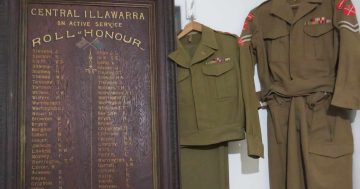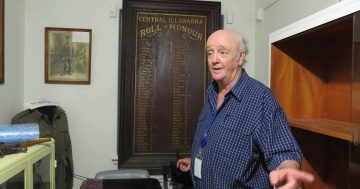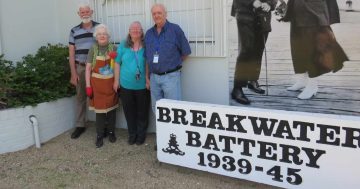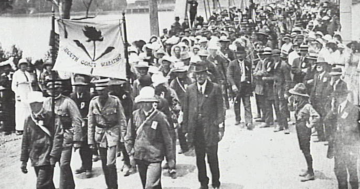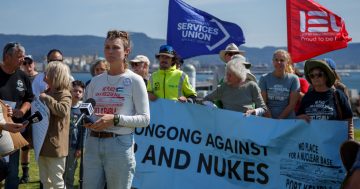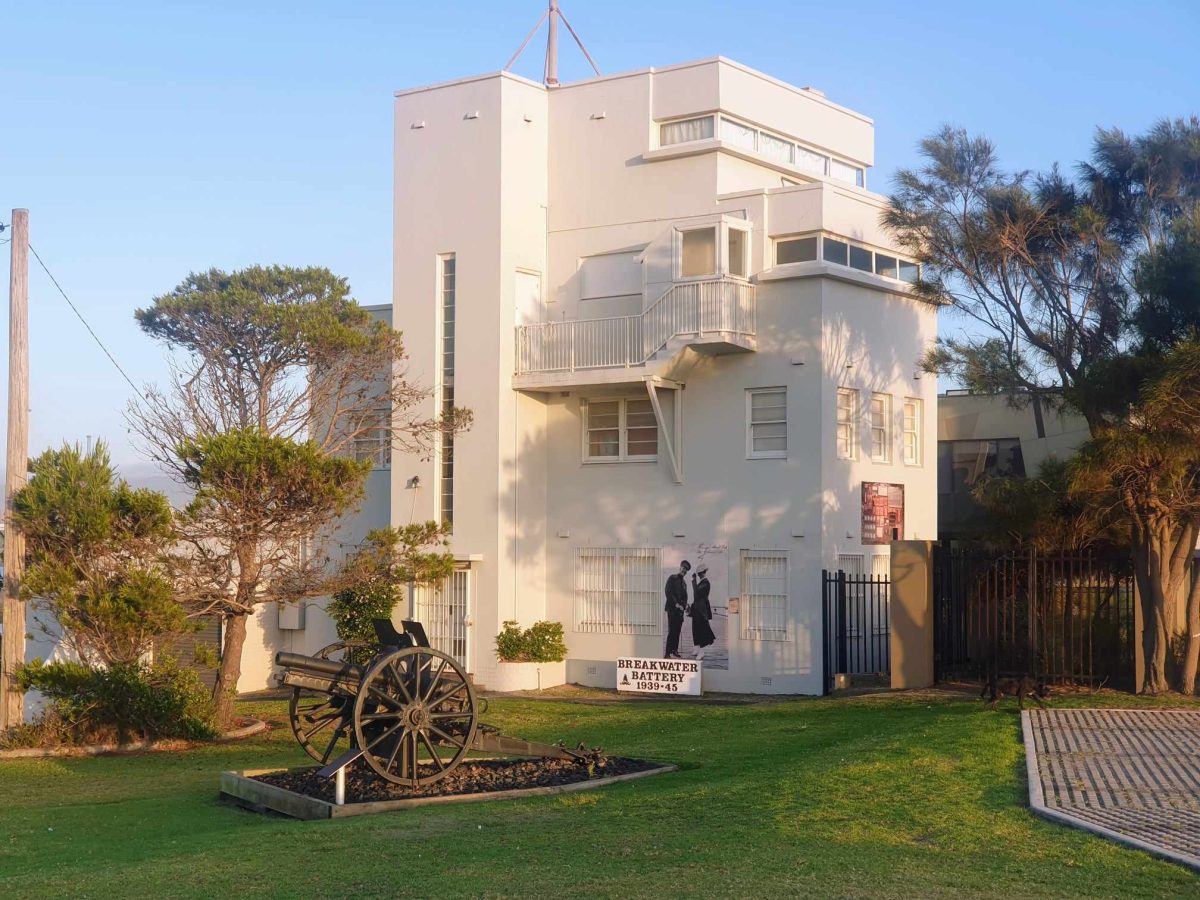
The Breakwater Battery building is less than 100 years old, and Kiama MP Gareth Ward believes there’s no reason it can’t be made fit-for-purpose to house the museum that is currently on-site. Photo: Zoe Cartwright.
Kiama MP Gareth Ward has called for urgent action to save the largest collection of the Illawarra’s military heritage, the Breakwater Battery Museum at Port Kembla.
The volunteer-run museum has since the 1980s operated out of the same building, previously owned by the NSW Port Authority.
NSW Ports has since been privatised, and the volunteers have been told their lease will not be continued.
They have been given until 31 January to leave.
Volunteers say they have found it difficult to organise meetings with local politicians, but former minister for the Illawarra Mr Ward had taken an interest.
“I went and visited the museum and there are some incredible artefacts and assets that should be preserved and on display,” he said.
“I think it’s a disgrace that in the month where we commemorate Remembrance Day we’re talking about closing down a museum with unique pieces of our history, including the flag from the original Waratah march.
“These are treasures that should be preserved and on display in our region.
“I’d hate to see these things lost or locked up and not on display. The Illawarra has a proud history of military service and we need a place to honour that history.
“I call on NSW Ports to reconsider its decision and I would hope the NSW Government would be happy to assist with grants to bring this building up to standard.
“Where is the Minister for the Illawarra? What good has it done the Illawarra when we have these assets?”
A spokesperson for the Minister for the Illawarra, Ryan Park, hit back at Mr Ward’s comments.
They had nothing to say, however, about any forthcoming support for the museum.
“The Member for Kiama has developed a reputation for delivering little when he was in government, then complaining about it now in opposition,” the spokesperson said.
The museum collection contains uniforms worn by Illawarra soldiers in both world wars, original equipment such as binoculars, weapons, and radio systems, as well as art from official painters and photographers and personalised pieces carved into spent cartridges by soldiers in their downtime.
It’s a living testament to the men and women from the region who served, fought and died.
Museum secretary Terry Bugg said he was frustrated that NSW Ports could not see the value of the collection.
“They say they’ve had items valued,” he said.
“How can you put a price on the original flag from the Waratah March?”
The Waratah March ran from Nowra to Liverpool, with a support crowd of more than 2000 people picking up recruits for WWI along the way.
The names of many of those recruits are on the Illawarra honour rolls from the time. These are also in the collection of the Breakwater Battery Museum.
Assistant curator at the Australian War Memorial, Andrew Muir, said it was impossible to put a price on items like these.
“The ‘value’ of museum and heritage items are assessed by determining their significance to the existing collection, their community and their history,” he said.
“Monetary value has very little to do with this assessment.
“It is often the intangible memories associated with the item rather than the physical or tangible object that determines the value of an item.
“Think of your favourite childhood toy; it is your memories rather than the toy that makes it valuable to you.”
Mr Muir said local museums played a vital role in preserving our nation’s history.
When they’re housed in disused heritage buildings, like the Breakwater Battery, they also preserve a tiny part of the local landscape.
“Local museums offer site specific networks of connection, telling stories that are specific to that place and the people who have lived there, stories that are of interest to visitors and locals,” he said.
“The Australian War Memorial is a national collection; we care for the stories of the whole nation.
“Sometimes the more specific the history, rather than becoming niche, it becomes universal.
“The Owen Gun is a case in point. An incredibly important weapon from Australia’s military past, used in the Second World War and later conflicts until the 1970s.
“It is a unique and innovative machine gun, prototyped and developed in Wollongong by Evelyn Owen and then produced by Lysaghts at Port Kembla for the Australian war effort.
“So an Australian machine gun becomes a specific local history connecting a story of innovation and creativity, sovereign industries, and a global success story.”
The Breakwater Battery Museum collection contains three Owen guns – an original, a replica and a ‘squashed’, or decommissioned, one.
NSW Ports has said the historic building needs investment to “enhance use”.
Mr Ward said he couldn’t see why it couldn’t be brought up to standard to allow the museum’s continued operation.
“We should have a home for the history and the memories of our region and the people who so gallantly defended our nation,” he said.
“Parliamentary precinct was built in 1810. You can’t tell me a building that was constructed in the 1930s can’t be retrofitted and made fit for purpose when the decision-makers occupy a building that was built 100 years prior.
“Surely we can find a solution.”









